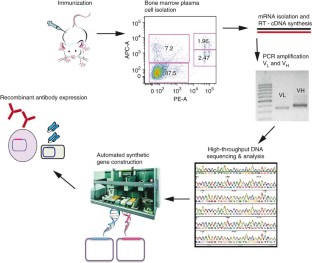
Therefore, partial CDR3 sequences, such as those contained in the output of TRUST v2.1, may be valuable when seeking to gain insights into the frequency of shared specificities. Our unique solutions for immunology research can save you time, money and risk. This is because structural studies indicate that only a small region in the complete CDR3 makes contact with the antigen peptide 5, 6, and the recent GLIPH (grouping of lymphocyte interactions by paratope hotspots) 5 method can cluster TCRs with likely shared specificity from enriched local motifs within many distinct CDR3 molecules. We can help you understand and manage immune responses. We also point out that partial CDR3 sequences of reasonable length (6–30 amino acids) and perfect match to a subregion of the respective CDR3 molecule are informative for modeling TCR binding specificity. Recent advances in neoantigen research have accelerated the development and regulatory approval of tumor immunotherapies, including cancer vaccines, adoptive cell therapy and antibody. However, we would note that single-chain CDR3 from bulk RNA-seq may also not be ideal to identify a unique clonotype because, for a strict definition of clonotype, generally both chains would be required. Mature T-cell lymphomas consisting of an expanded clonal population of T cells that possess common rearrangements of the T-cell receptor (TCR) encoding genes can be identified and monitored using molecular methods of T-cell repertoire analysis. The adaptation of high-throughput sequencing to the B cell receptor and T cell receptor has made it possible to characterize the adaptive immune receptor repertoire (AIRR) at unprecedented depth. We recognize that partial CDR3 sequences or reads that extend beyond the accepted limits of CDR3 cannot be unambiguously counted as unique clonotypes. 1), which were considered “non-canonical unconfirmed” by Bolotin et al. The output of TRUST v2.1 contains reads with V or J gene motifs and partial CDR3 sequences ( Supplementary Fig. This unique tool is based on T-cell receptor sequencing data generated from Adaptive’s partnership with Microsoft and our Antigen Map project from ~4,000 HLA typed samples.TRUST uses TCR variable (V) and joining (J) gene motifs to search and annotate CDR3-containing reads and performs de novo assembly on the CDR3-overlapping reads. He is a recipient of the Gates Foundation Grand Challenge 'Ending the Pandemic Threat' for his broad-spectrum vaccine technology, the history of that project. The HLA classifier uses machine learning to provide a positive or negative call for 145 HLA genes and alleles. a Stanford colleague and collaborator, joined with us at the very end of. Using Atrecas Immune Repertoire Capture (IRC) technology and methods previously described in the Ahmed lab, the research team was able to isolate antibodies from the blood of the survivors. The Immunosequencing assay can infer a sample’s HLA type based on the T-cell receptor (TCR) profile. 444 volume 33 NumBeR nature biotechnology. By adding the HLA classifier to samples processed using Immunosequencing, researchers can unlock new understanding of immune repertoire dynamics in the context of HLA type. New research is emerging that explores the link between HLA and disease susceptibility, response to immunotherapy, and more. The importance of a person’s HLA type in transplant research is well understood, as is the association of specific HLA alleles to common diseases.

HLA type plays an important role in driving T-cell selection and in shaping T-cell repertoires. We are interested in cytokine expression in human diseases, before and after immunization and in the. With the available technology we can detect over 60 different cytokines in a sample as small as 10 ul. At any given point in time, a person’s immune repertoire is made up of 10 8. Researchers also refer to the TCR repertoire and BCR repertoire when studying T cells and B cells, respectively. Foreign antigens are presented to T cells by protein complexes called “major histocompatibility complexes” (MHC) that are coded by human leukocyte antigen (HLA) genes. We use xMAP technology by Luminex to detect cytokine expression and secretion in lymphocyte samples from mouse and human sources. Immune repertoire refers to all of the unique T-cell receptor (TCR) and B-cell receptor (BCR) genetic rearrangements within the adaptive immune system.


 0 kommentar(er)
0 kommentar(er)
